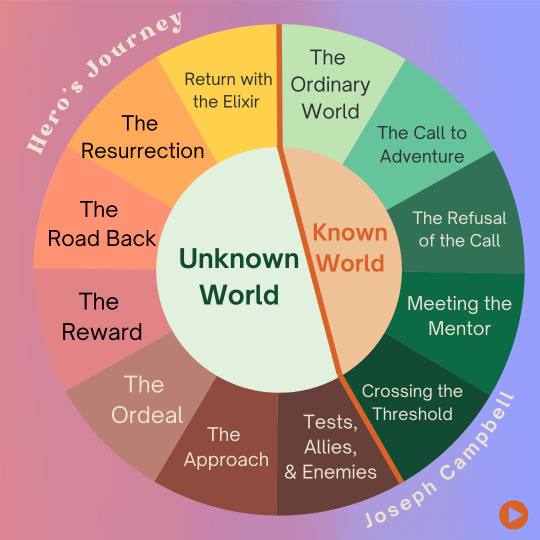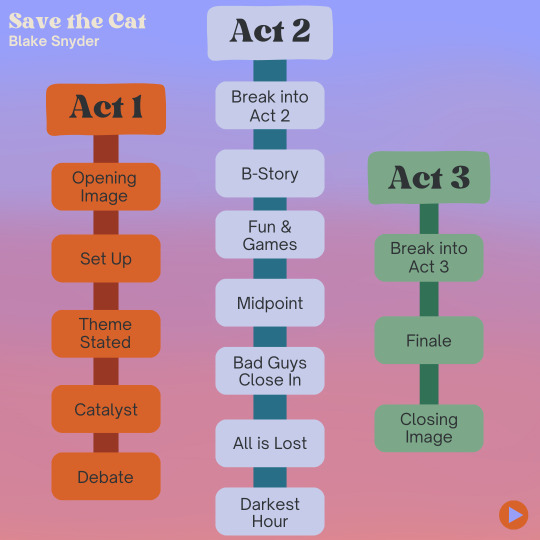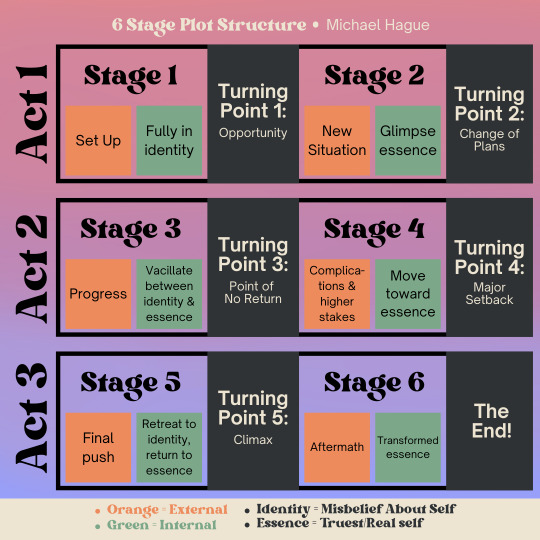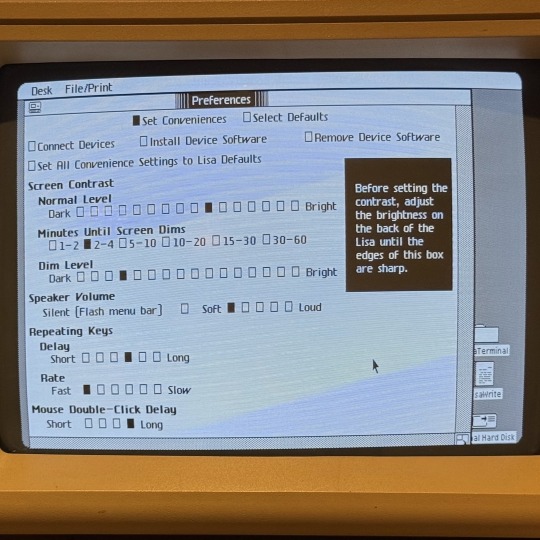#model-driven applications
Explore tagged Tumblr posts
Text
0 notes
Text
How DeepSeek AI Revolutionizes Data Analysis
1. Introduction: The Data Analysis Crisis and AI’s Role2. What Is DeepSeek AI?3. Key Features of DeepSeek AI for Data Analysis4. How DeepSeek AI Outperforms Traditional Tools5. Real-World Applications Across Industries6. Step-by-Step: Implementing DeepSeek AI in Your Workflow7. FAQs About DeepSeek AI8. Conclusion 1. Introduction: The Data Analysis Crisis and AI’s Role Businesses today generate…
#AI automation trends#AI data analysis#AI for finance#AI in healthcare#AI-driven business intelligence#big data solutions#business intelligence trends#data-driven decisions#DeepSeek AI#ethical AI#ethical AI compliance#Future of AI#generative AI tools#machine learning applications#predictive modeling 2024#real-time analytics#retail AI optimization
3 notes
·
View notes
Text
Writing Notes: The Five-Factor Model of Personality
Culture is transmitted to people through language, as well as through social norms which establish acceptable and unacceptable behaviors which are then rewarded or punished (Henrich, 2016; Triandis & Suh, 2002).
With an increased understanding of cultural learning, psychologists have become interested in the role of culture in understanding personality.
The 5 Personality Traits According to this Model
OPENNESS TO EXPERIENCE
Refers to a person's imagination, feelings, actions, ideas
LOW score: More likely to be practical, conventional, prefer routine
HIGH score: More likely to be curious, have a wide range of interests, be independent
CONSCIENTIOUSNESS
Competence, self-discipline, thoughtfulness, goal-driven
LOW: Impulsive, careless, disorganized
HIGH: Hardworking, dependable, organized
EXTROVERSION
Sociability, assertiveness, emotional expression
LOW: Quiet, reserved, withdrawn
HIGH: Outgoing, warm, seeks adventure
AGREEABLENESS
Cooperative, trustworthy, good-natured
LOW: Critical, uncooperative, suspicious
HIGH: Helpful, trusting, empathetic
NEUROTICISM
Tendency toward unstable emotions
LOW: Calm, even-tempered, secure
HIGH: Anxious, unhappy, prone to negative emotions
Applicability
The idea that personality can be described and explained by five traits (OCEAN) has important implications, as does the fact that most personality tests were constructed and initially tested in Western countries.
Western ideas about personality may not apply to other cultures (Benet-Martinez & Oishi, 2008).
2 Main Cultural Approaches for Researching Personality
Etic traits - considered universal constructs that are evident across cultures and represent a biological bases of human personality. If the Big Five are universal then they should appear across all cultures (McCrae and Allik, 2002).
Emic traits - constructs unique to each culture and are determined by local customs, thoughts, beliefs, and characteristics. If personality traits are unique to individual cultures then different traits should appear in different cultures.
Using an Etic Framework
Cross cultural research of personality uses an etic framework and researchers must ensure equivalence of the personality test through validation testing.
The instrument must include equivalence in meaning, as well as demonstrate validity and reliability (Matsumoto & Luang, 2013).
Example: The phrase feeling blue is used to describe sadness in Westernized cultures but does not translate to other languages.
Differences in personality across cultures could be due to real cultural differences, but they could also be consequences of poor translations, biased sampling, or differences in response styles across cultures (Schmitt, Allik, McCrae, & Benet-Martínez, 2007).
Personality Test/Measure Used: The NEO-PI
Most of the cross-cultural research on the Five-Factor Model (FFM) and Big Five (OCEAN) has been done using the NEO-PI (and its subsequent revisions; i.e., it is an assessment tool developed to measure the 5 dimensions of personality according to the FFM) which has demonstrated equivalence, reliability and validity across several cross-cultural studies (Costa & McCrae, 1987; McCrae, Costa & Martin, 2005).
Research using the NEO-PI found support for the entire Five-Factor Model in Chinese, Dutch, Italian, Hungarian, German, Australian, South African, Canadian, Finnish, Polish, Portuguese, Israeli, Korean, Japanese, and Filipino samples, in addition to other samples (McCrae, Costa, Del Pilar, Rolland, & Parker, 1998).
NOTE
Personality tests rely on self-report which is susceptible to response bias like socially desirability responding.
To evaluate this possibility, McCrae and colleagues (2005) recruited students from 50 cultural groups and modified the NEO-PI to be in the third person (i.e., he, she, his, her):
The research participants were asked to complete the form on someone else that they knew very well (McCrae et al., 2005).
The same 5 factors emerged in this study.
These results provided empirical support for the FFM and for the use of self-report instruments when conducting cross-cultural personality research.
There was no reason for the students to respond in a desirable way because they were answering questions about someone else.

Sources: 1 2 ⚜ Writing Notes & References
#writing notes#personality#psychology#culture#writeblr#character development#spilled ink#dark academia#langblr#studyblr#writing reference#literature#writers on tumblr#writing prompt#poetry#poets on tumblr#writing inspiration#writing ideas#writing inspo#creative writing#fiction#character building#light academia#research#writing resources
175 notes
·
View notes
Text






🎄💾🗓️ Day 18: Retrocomputing Advent Calendar - Commodore 64🎄💾🗓️
The Commodore 64, released in 1982, is one of the ones we keep hearing got many people their start in their own computing history. Powered by a MOS Technology 6510 processor at 1.02 MHz and featuring 64 KB of RAM, it became the best-selling single computer model of all time, with an estimated 12.5–17 million units sold. Its graphics were driven by the VIC-II chip, capable of 16 colors, hardware sprites, and smooth scrolling, while the SID (Sound Interface Device) chip delivered advanced audio, supporting three voices with waveforms and filters, making it a lot of fun for gaming and music.
Featured a built-in BASIC interpreter, allowing users to write their own programs out-of-the-box. The C64’s affordability, large software library, lots of games, productivity, and educational applications made it a household name. It connected to TVs as monitors and supported peripherals like the 1541 floppy disk drive, datasette, and various joysticks. With over 10,000 commercial software titles and a thriving homebrew scene, the C64 helped define a generation of computer enthusiasts.
Its impact on gaming was gigantic, iconic titles like The Last Ninja, Maniac Mansion, and Impossible Mission. The C64 also inspired a demoscene, where programmers pushed its hardware for visual and audio effects. The Commodore 64 remains a symbol of computing for the masses and creative innovation, still loved by retrocomputing fans today.
Check out the National Museum of American History, and Wikipedia. https://americanhistory.si.edu/collections/object/nmah_334636 https://en.wikipedia.org/wiki/Commodore_64
And…! An excellent story from Jepler -
== While I started on the VIC 20, the Commodore 64 was my computer for a lot longer. Its SID sound chip was a headline feature, and many of my memories of it center around music. Starting with Ultima III, each game in the series had a different soundtrack for each environment (though each one was on a pretty short loop, it probably drove my folks nuts when I would play for hours). There were music editors floating around, so I tried my hand at arranging music for its 3 independent voices, though I can't say I was any good or that I have any of the music now. You could also download "SID tunes" on the local BBSes, where people with hopefully a bit more skill had arranged everything from classical to Beatles to 80s music.
Folks are still creating cool new music on the Commodore 64. One current creator that I like a great deal is Linus Åkesson. Two videos from 2024 using the Commodore 64 that really impressed me were were a "Making 8-bit Music From Scratch at the Commodore 64 BASIC Prompt", a live coding session (http://www.linusakesson.net/programming/music-from-scratch/index.php) and Bach Forever (http://www.linusakesson.net/scene/bach-forever/index.php) a piece played by Åkesson on two Commodore 64s.
Like so many things, you can also recreate the experience online. Here's the overworld music for Ultima III: https://deepsid.chordian.net/?file=/MUSICIANS/A/Arnold_Kenneth/Ultima_III-Exodus.sid&subtune=1 -- the site has hundreds or thousands of other SIDs available to play right in the browser.
Have first computer memories? Post’em up in the comments, or post yours on socialz’ and tag them #firstcomputer #retrocomputing – See you back here tomorrow!
#commodore64#retrocomputing#vintagecomputing#computermuseum#classicgames#retrogaming#1980snostalgia#mos6510#vicii#sidchip#gaminghistory#computerhistory#personalcomputing#programming#8bitgaming#demoscene#computerscience#classiccomputers#homecomputing#nostalgiamachine#oldschoolgaming#historicaltech#technostalgia#c64games#gaminglegends#codinghistory#earlycomputers#floppydisk#techmuseum#retrotech
82 notes
·
View notes
Text
CHASE THE HEAT
-> Y/n‘s motorcycle/ Enhypen‘s cars



Synopsis -> Y/N, a daring motorcycle racer, catches the attention of seven competitive car racers called ENHYPEN. Driven by lust and rivalry, the boys chase her both on and off the track, but as the tension builds, their obsession with her grows. Will they see her for more than just a prize, or will their dangerous desires consume them?

Y/N’s Motorcycle
Model: Ducati Panigale V4 S
Why: The Ducati Panigale is sleek, powerful, and undeniably badass. Its aggressive design and impressive speed match Y/N's bold and daring persona.
Features to Highlight:
A jet-black finish with crimson accents. Exceptional speed and handling, allowing Y/N to perform insane stunts and maneuvers during races. A throaty, roaring engine sound that turns heads wherever she goes. Y/N’s bike represents her independence and her ability to stand out in a world dominated by car racers. It’s fast, lethal, and a statement piece, just like her.

ENHYPEN’s Cars
Each car reflects their individual personality and racing style:
Jungwon (Leader)
Car: Nissan GT-R R35
Color: Midnight blue with silver detailing.
Why: The GT-R is a precise, powerful machine, perfect for a strategist like Jungwon. It’s reliable yet intimidating, just like him.
Racing Style: Methodical and calculated, Jungwon rarely makes mistakes.

Heeseung (Veteran)
Car: Porsche 911 Turbo S
Color: Metallic gray with red accents.
Why: A refined, high-performance car that suits Heeseung’s calm and experienced demeanor.
Racing Style: Smooth and consistent, relying on his years of experience to win.

Jay (The Showman)
Car: Chevrolet Corvette C8 Stingray
Color: Bright yellow with black racing stripes.
Why: Flashy, bold, and attention-grabbing—just like Jay. The Corvette’s mix of power and style fits his personality perfectly.
Racing Style: Thrives on risky moves and showing off during races.

Jake (The Heart)
Car: Ford Mustang Shelby GT500
Color: Deep green with white stripes.
Why: A Mustang is a classic, reliable car with a wild streak, mirroring Jake’s charming yet intense nature.
Racing Style: Balanced and adaptive, he races with both heart and skill.

Sunghoon (The Perfectionist)
Car: Audi R8 V10 Plus
Color: Glossy black with subtle chrome accents.
Why: The Audi R8’s sleek design and precision performance are ideal for Sunghoon’s meticulous personality.
Racing Style: Laser-focused on perfection, he rarely takes unnecessary risks.

Sunoo (The Charmer)
Car: Lamborghini Huracán EVO
Color: Pearl white with gold accents.
Why: The Huracán EVO is sleek, stylish, and undeniably powerful—perfect for Sunoo’s sharp and unpredictable nature. It retains an air of charm while exuding luxury and speed.
Racing Style: Agile and precise, he knows how to make bold moves without sacrificing control, keeping everyone guessing.

Ni-ki (The Wildcard)
Car: Dodge Challenger SRT Hellcat
Color: Matte black with glowing orange details.
Why: The Hellcat’s raw power and rebellious vibe perfectly match Ni-ki’s fearless and unpredictable nature.
Racing Style: Aggressive and daring, he pushes limits like no one else.

Note: i tried to find pictures as close as possible… hopefully it helps at least a little bit for imagining the cars while reading. :)
Masterlist chase the heat
Chase the heat Teaser
Masterlist
Open taglist
If you'd like to be tagged in future updates for this story, let me know by:
- Sending me a message or
- Sending your application here

#enhypen#enhypen scenarios#kpop#kpop scenarios#fanfic#enha#enha x reader#enhypen ot7#enha imagines#enhypen x reader#enhypen jake#enhypen sunghoon#enhypen heeseung#enhypen sunoo#jungwon enhypen#enhypen niki#jay enhypen#street racing#car racing#motorcycle
65 notes
·
View notes
Text



CRAB – Creeping Robot Activated Balloon, by Peter Holland, Model Maker magazine (1980). "This is a fun machine that walks, or rather creeps, sideways on a smooth level surface. It is driven by a simple pneumatic pulser taking its power from the stored energy in a toy balloon. The walking action is provided by an interesting application of a "walking beam". Fig. 1 shows the general principle imagine a foot at each end of the beam; turn it counter- clockwise about its left foot and the right foot will advance, then turn it clockwise about its right foot and its left foot will advance. Clearly if it is to get anywhere without the use of wheels and brakes, first one foot will have to lift as it moves forward, then the other. Fig. 2 shows how a "U" shaped and a rectangular foot can be made to walk in a stable manner, using gravity as the means of moving the respective feet forwards. The skew pivots at each end of the walking beam are the trick here. All that is necessary is to raise and lower the base of the rectangular foot to make the whole device walk. … The prototype "Crab" runs (it should be said "creeps") for about 15 minutes on one balloon-full of air and travels about 10 feet in the process!" – CRAB – Creeping Robot Activated Balloon, by Peter Holland, Model Maker magazine, July 1980.
23 notes
·
View notes
Text
what's the plan? outline methods & tips!
Hey, Rough Drafters!
This is for all the outline fans out there. Here are some tips on different outline structures that might help you while you blueprint your Rough Draft! I hope there is something helpful here whether you are new to outlining or a veteran. This is not a comprehensive list. I totally recommend digging into other narrative structures, seeing how they tick, and deciding what works for you!
✏️ The Hero’s Journey • Created by Joseph Campbell (using the simplified terms from Christopher Vogler)

The Hero’s journey is the backbone of most outline structures. The only difficult thing is a lot of these terms are still derived from classic mythic structure and are less applicable today. However, since it has been so well dissected and discussed, there are so many resources to help transpose the terms to narratives that involve less sword-and-shield-heroism. It might take a little time to understand each beat and what it can mean for you and your story, but this is such a well loved structure and will give your story some solid backbone! This structure is best suited for an adventure story where characters travel from one place to another, but you can get creative about what that adventure or journey looks like. At its most basic, though, the hero’s journey will help take your characters on quests in a far off place—whether it’s in the stars, across the continent, or in a world of your own making.
⭐ Great media examples of ‘journey’ narratives are: Star Wars (pick one really), Little Miss Sunshine, Lord of the Rings, and Life of Pi.
✏️ Save the Cat • Created by Blake Snyder

Save the Cat was originally intended for screenwriting. Its best application is in scripting, whether that be screenwriting, plays, games, or comics. The first and last beats help to set a tone for your story, which is crucial for script writing and opening/ending shots in films, but this concept can be just as important in prose. Consider using guidelines from this structure to plan your first and last scenes before you get to November.
⭐ You will recognize Save the Cat in most films, and you can find beat sheets to match films for example on the Save the Cat website.
✏️ Six Stage Outline by Michael Hauge

This structure is great to keep simple with bullet points or expand for more depth. In this outline there are only 11 beats—6 stages and 5 turning points. Turning points are the highest moment of external conflict. Ideally, internal and external conflict escalate at each turning point. Identity deals with character’s misbeliefs about themselves as the narrative drives them to be their most authentic self. This outline focuses on developing both internal and external struggles. If your story is particularly character-driven, this structure might be the one for you.
⭐ Many stories follow this structure but the one I was taught off of is the greatest movie of all time. Shrek.
Try drawing your arc with notes out on paper. This arc can silly: include dead ends, drop offs, spirals, tangles, anything! This helps visualize the ups and downs of the narrative. Also great to do after you’ve completed outlining for a visual aid.
Sometimes... one outline model is not enough! Mix and match your favorite terms and structures in the manner you feel best assists your narrative structure. Don’t be afraid to make it your own!
Read in your medium (novels, scripts, poems, etc.) and notate pages and scenes where the major beats happen. This really helps engage your brain and makes you more familiar with plot structure!
My favorite method to outline is the MLA outline structure. Using a template like this helps me put all of my ideas into place. I don’t have an excuse for not knowing what to do. This helps lock me in!
✏️ Uh oh, Secret Plantser Agenda!
If outlining the ending first doesn’t work for you, outline everything EXCEPT the ending! Leave something for you to discover once you get there!
Sometimes you need to take a step back. Maybe don’t make a 10 page outline. Maybe make 10 bullet points. Outline as much or as little as you need to.
Occasionally overplanning can cause me to lose the joy in my writing! Make sure to really experiment to find what works best with you and your style! Sometimes that means... making a less in-depth outline. This is a call out post for me (Sarah with an ‘h’) specifically.
✏️ Technically, I like to combine elements of all three of these plot structures, but Michael Hauge’s 6 stage outline is my favorite. It’s a very good structure for adjusting to your outlining style, whether you want to do just the bare bones plot points, or you want to use them as the waypoints as you plot out scene by scene. I like to use the stages and turning points as the headings and subheadings to my outline. I hope these tips are able to help you in your outlining journey, both planner and plantser alike. If you know of any other helpful tips for outlining, please share them with us!
Thanks for tuning in, happy drafting!
-Sarah with an ‘H’
#creative writing#writeblr#writers#writing#writing challenge#writing community#artists on tumblr#books#fanfic#rdmo24#rdmo#rough draft 2024#rough draft month#rough draft#writers on tumblr#nano alternatives#nanowrimo alternatives#nanowrimo
30 notes
·
View notes
Text
Foxhog Venture Rejects 450+ Startup Applications in India: A Bold Stand for Transparency and Ethical Investing

Foxhog Ventures, a US-based venture capital firm, has recently stirred the Indian startup ecosystem by rejecting over 450 startup funding applications. This bold move reflects the firm’s deep rooted commitment to transparency, ethical investing, and stringent due diligence practices in the evolving landscape of venture capital in India.
Many of the rejected applications fell short due to incomplete documentation, inconsistencies in financial disclosures, and non-compliance with essential legal standards. Some cases involved the submission of falsified data, which not only led to the rejection of those proposals but also resulted in the blacklisting of the startups and the initiation of legal proceedings.
Despite the firm stance, Foxhog continues to express its confidence in the Indian market, especially in its untapped potential. The firm remains focused on funding purpose driven startups, particularly those emerging from Tier 2 and Tier 3 cities. With a sharp eye on high impact sectors like agriculture, dairy, retail, and fintech, Foxhog is building a funding ecosystem rooted in real-world outcomes and long-term viability. Its flagship initiative, Venture Capital for Villages, is a prime example- an ambitious program aimed at enabling rural entrepreneurship and promoting grassroots economic development.
In response to defamatory narratives and fraudulent applications, the firm has taken legal measures, including filing police complaints and issuing formal legal notices. These steps are not about deterring startups, they’re about protecting the credibility of foreign investment and ensuring that serious founders have access to fair, trusted platforms. The firm believes such accountability reinforces the startup environment rather than weakens it.
Internally, the mass rejections have led Foxhog Ventures to double down on its due diligence protocols. Acknowledging that some past decisions lacked the rigor they demand today, the firm is now setting higher standards for risk assessment and transparency. This recalibration is part of the broader vision to redefine venture capital in India for 2025 and beyond, making it smarter, cleaner, and more impact focused. https://www.youtube.com/@foxhog/videos
For Indian startups looking to work with Foxhog or any other global investor, the message is clear: come prepared. Transparency is non-negotiable. Founders are encouraged to maintain accurate financials, be honest about profitability and losses, clearly communicate burn rates and revenue models and above all, uphold integrity in all investor conversations. In an age where funding is increasingly tied to purpose and accountability, the future belongs to startups that are built on honesty and resilience.
5 notes
·
View notes
Text
Do modern cars still use hand signals for turning? If not, how do they indicate turns without using headlights or brake lights?
Modern cars no longer rely on hand signals as a regular way to indicate turns, but regulations in some countries or regions still require the use of hand signals in emergency situations (such as when the turn signal fails). Here is a detailed answer:
1. The current status of hand signals
Obsolete in regular driving:
Modern cars are equipped with electronic turn signals (amber indicators) as standard, and hand signals are only used as an emergency alternative when the turn signals fail completely.
Applicable scenarios:
The turn signal circuit is damaged and cannot be repaired immediately (such as a sudden failure during long-distance driving).
Some motorcycles still require hand signals when the electronic turn signal fails (regulatory requirements vary by region).
Regulatory retention requirements:
USA: Some states (such as California and Texas) still require drivers to learn hand signals to deal with emergencies.
Europe: Hand signals are written into the theoretical part of the EU driving test, but are rarely used in actual driving.
China: The driver's license test includes knowledge of hand gestures, but it is not necessary to use them in daily driving.
2. Turn signal system of modern cars
1. Electronic turn signal (Turn Signals)
Independent operation: The turn signal is separated from the headlights and brake lightscircuit and can be turned on separately.
Color and position: Front/rear turn signal: amber (some US-spec cars have red rear turn signal).
Side turn signal: integrated in the rearview mirror or front fender (some models have dynamic running water lights).
Mandatory requirements of regulations: All mass-produced cars must be equipped with, and the flashing frequency is60–120 times/minute(the dashboard will prompt when there is a fault).
2. Automatic turn signal technology
Steering assist: The steering wheel rotation angle triggers the turn signal to automatically turn on (such as Tesla, BMW).
Lane change signal: A light flick of the steering lever can activate 3-5 flashes (prompting a short lane change).
3. Alternative lighting system
Hazard lights:
Used for vehicle failure or emergency parking, and cannot replace turn signals (some countries prohibit turning on the hazard lights while driving to change lanes).
Adaptive lighting system:
Automatically enhance the lighting inside the curve when turning (such as Audi Matrix LED), but the turn signal must still be turned on.
III. Specifications for the use of hand gestures
If you need to use hand gestures temporarily, you must follow the following international standards:
Turn left: Extend your left hand straight out of the window (↓ picture).
Turn right: Bend your left hand upward in an "L" shape (some areas allow the right hand to be extended).
Slow down/stop: Extend your left hand downward with your palm facing backward.
⚠️ Note:
Hand gestures must be turned on in advance (at least 3 seconds) to ensure that other drivers can see them.
Only for emergency situations. Long-term reliance on hand gestures may be judged as a vehicle that does not meet safety standards.
IV. Exceptions for special vehicles and regions
Vintage Cars:
Some old cars (such as those produced before 1960) are allowed to be designed without turn signals, but they need to be installed before they can be legally driven on the road.
Bicycles and motorcycles:
Bicycles usually rely on hand gestures (no electronic signal lights).
If the turn signal of a motorcycle is broken, it is necessary to use hand gestures or stop to repair it.
Military/agricultural vehicles:
Some special vehicles (such as tractors) may be exempt from the electronic signal light requirement.
V. Future trends: intelligent lighting systems
Projected turn signals:
Mercedes-Benz Digital Light system can project turn arrows onto the road surface (↓ picture).
V2X communication:
Directly send turn intention signals between vehicles (without relying on lights or gestures).
Summary: Modern cars use electronic turn signals to achieve accurate and safe turn instructions, and hand gesture signals are only used as emergency backup plans. If the turn signal fails, it is recommended to repair it first rather than rely on hand gestures - long-term use may violate vehicle safety regulations (such as US FMVSS 108).

#led lights#car lights#led car light#youtube#led auto light#led light#led headlights#led headlight bulbs#ledlighting#young artist#turn signals#car#classic cars#car culture#cartoon#cars#self care#american cars#luxury car#car light#lighting#lights#headlight bulb#headlamp#headlight
6 notes
·
View notes
Text
Don Moynihan at Can We Still Govern?:
For those who don’t know much about government, the idea of Elon Musk as a serious tech guy who could shake up how the public sector work was appealing. Even people who do know a lot about government were hopeful.
Such hopes now look naive. Musk is not just ignorant about what government does, he chooses to celebrate and make decisions based on that ignorance, defaulting to accusations of fraud to explain things he does not want to understand. He is not interested in fixing government, but in destroying key parts of government, and that takes no great skill. This is not just a point about competing political philosophies, but about state capacity, and specifically tech skills in government. Musk is not just destroying core government functions, he is also destroying the actual tech capacity of government. Because there are, in fact, skilled technologists who work in government. They are not enough of them, and they lacked power to make big changes. They worked mostly in the US Digital Service and 18F, both created in 2014 after the failure of healthcare.gov. And now they are mostly gone. All 18F employees were fired as part of the ongoing Reductions in Force. The US Digital Service no longer exists. It is now the US DOGE Service. It also has seen about 40 people laid off, and 21 employees resigned last week, leaving around 40 experienced employees left.
Here is a thumbnail sketch of the two units: USDS offered support and guidance to agencies, but could not dictate a governmentwide approach on most issues. In times of crisis, or when a President prioritized a policy outcome dependent on digital innovations, it could play a more prominent role, serving as a de facto firefighter for digital governance. The General Services Administration set up its own digital consultancy team, 18F in 2014. This team’s mission is to work with agencies to “[transform] the way the federal government builds and buys digital services.” 18F was a cost recoverable office, meaning that they charge partner agencies for their work rather than being funded directly through a congressional appropriation. Both organizations use similar managerial technologies, which includes agile, iterative design, a user-centric approach, a reliance on data-driven decision making, directly managing relationships with vendors, favoring open-source solutions, the prioritization of platform models, and a flatter organizational culture. USDS and 18F represented a hopeful trend for American government: embedding serious tech skills inside the bureaucracy, rather than relying on private vendors. They care about public services, and represented the most visible public sector manifestation of “civic tech” in government. [...]
DOGE is a step backwards for government tech talent
Musk’s team saw USDS as an an existing shell they could occupy that seemed nominally aligned with goal of modernizing government. A former USDS official, Amy Gleason, had worked for one of the DOGE team, Brad Smith in the private sector, and returned to USDS on the understanding she was helping the Trump transition team. Gleason became the official DOGE administrator last week, though of course no-one believes this to be the reality. She also tried to get the USDS to hire some of the staff who had already signed on to work for DOGE. None made the cut. They did not advertise their connection with Musk, and so their rejections were not clouded by political bias. Their applications failed because they were not qualified. [...] The point is that Musk isn’t bringing in incredible 10X coders to replace bureaucrats. The best evidence we have is that they would not have been hired into a tech role under normal circumstances. The people who could not make it at USDS were hired at DOGE staff because of their personal and professional connections to Musk, and their ideological commitment for downsizing government. This was a poor fit with the existing employees at 18F and the US Digital Service, who believed that technology could be used to make government work better, not to cut its core tasks. [...] The Trump administration does not care about the loss of this talent. Katie Miller, the DOGE spokesperson, posted this about the resignation of USDS officials. Miller does not explain how fully remote workers posted “trans flags” (or rainbow flags for the rest of us). But she herself is representative of DOGE. She has no tech skills, which is fine for a PR person. Her husband, Stephen Miller, has been described as the “Prime Minister” aiding Musk. Musk had previously given Miller’s political groups $50 million dollars. These are the people running tech in government now. (One more fun fact about Katie Miller: According to Wikipedia, she destroyed “hundreds of copies of the school's newspaper, after it endorsed an opposing student government candidate.”)
DOGE’s cuts have harmed skilled technology needed to run government functions.
#DOGE#Musk Coup#Techonology#Healthcare.gov#18F#US Digital Service#Amy Gleason#Vivian Graubard#Luke Farritor#Alexandra Beynon#Jordan Wick#Katie Miller
12 notes
·
View notes
Text










🎄💾🗓️ Day 9: Retrocomputing Advent Calendar - The Apple Lisa 🎄💾🗓️
The Apple Lisa, introduced on January 19, 1983, was a pioneering personal computer notable for its graphical user interface (GUI) and mouse input, a big departure from text-based command-line interfaces. Featured a Motorola 68000 CPU running at 5 MHz, 1 MB of RAM (expandable to 2 MB), and a 12-inch monochrome display with a resolution of 720×364 pixels. The system initially included dual 5.25-inch "Twiggy" floppy drives, later replaced by a single 3.5-inch Sony floppy drive in the Lisa 2 model. An optional 5 or 10 MB external ProFile hard drive provided more storage.
The Lisa's price of $9,995 (equivalent to approximately $30,600 in 2023) and performance issues held back its commercial success; sales were estimated at about 10,000 units.
It introduced advanced concepts such as memory protection and a document-oriented workflow, which influenced future Apple products and personal computing.
The Lisa's legacy had a huge impact on Apple computers, specifically the Macintosh line, which adopted and refined many of its features. While the Lisa was not exactly a commercial success, its contributions to the evolution of user-friendly computing interfaces are widely recognized in computing history.
These screen pictures come from Adafruit fan Philip " It still boots up from the Twiggy hard drive and runs. It also has a complete Pascal Development System." …"mine is a Lisa 2 with the 3.5” floppy and the 5 MB hard disk. In addition all of the unsold Lisa machines reached an ignominious end."
What end was that? From the Verge -
In September 1989, according to a news article, Apple buried about 2,700 unsold Lisa computers in Logan, Utah at a very closely guarded garbage dump. The Lisa was released in 1983, and it was Apple’s first stab at a truly modern, graphically driven computer: it had a mouse, windows, icons, menus, and other things we’ve all come to expect from “user-friendly” desktops. It had those features a full year before the release of the Macintosh.
Article, and video…
youtube
Check out the Apple Lisa page on Wikipedia
, the Computer History's article -
and the National Museum of American History – Behring center -
Have first computer memories? Post’em up in the comments, or post yours on socialz’ and tag them #firstcomputer #retrocomputing – See you back here tomorrow!
#applelisa#retrocomputing#firstcomputer#applehistory#computinghistory#vintagecomputers#macintosh#1980scomputers#applecomputer#gui#vintagehardware#personalcomputers#motorola68000#technostalgia#twiggydrive#floppydisk#graphicalinterface#applefans#computinginnovation#historictech#computerlegacy#techthrowback#techhistory#memoryprotection#profiledrive#userinterface#firstmac#computermilestone#techmemories#1983tech
112 notes
·
View notes
Text
From Casinos to Crypto: How Las Vegas Became a Blockchain Innovation Hub

Las Vegas, long synonymous with its iconic casinos and vibrant entertainment, is now emerging as an unexpected hub for blockchain innovation. Inspired by the gaming industry’s need for security, transparency, and enhanced user experiences, the city is becoming a leader in fintech applications powered by blockchain. This transformation is driving the convergence of technology, finance, and entertainment, paving the way for the city’s tech-driven future. Fifteen years ago, in 2010, 10,000 Bitcoin was used to purchase two pizzas, a transaction that marked the first real-world use of the cryptocurrency. At the time, Bitcoin was practically worthless. Fast forward to today, and the value of Bitcoin has skyrocketed. Now, selling just 33 Bitcoin could buy you a $3 million penthouse at the prestigious Four Seasons Private Residences in Las Vegas. This dramatic shift highlights not only Bitcoin’s meteoric rise but also redefining how wealth and assets are exchanged in a tech-driven world.
1. Blockchain Integration in Las Vegas
Resorts World Las Vegas
Resorts World Las Vegas is a prime example of how casinos are embracing blockchain technology and digital currencies.
Crypto Payments: The casino allows customers to use Bitcoin and Ethereum for hotel bookings, dining, and other services, partnering with Gemini, a regulated crypto exchange.
Cashless Gaming: Patrons can use mobile wallets instead of carrying physical cash. This not only enhances convenience but also increases transaction security, reducing risks of theft or fraud.
Wynn Las Vegas
Wynn Las Vegas has partnered with fintech firms to explore blockchain-based loyalty rewards programs. Customers can earn digital tokens tied to casino activities, which can be redeemed for hotel stays, entertainment, or dining experiences.
Case Study: Blockchain for Fair Play
A notable example of blockchain in casinos is FunFair Technologies, a platform that offers decentralized casino solutions using Ethereum smart contracts. While not exclusive to Las Vegas, FunFair’s model ensures provable fairness by publishing game outcomes on the blockchain, making it impossible for casinos to manipulate results.
Such innovations are being tested in Las Vegas-style gaming platforms globally, showing how blockchain can build trust between casinos and players.
Casinos in Las Vegas Accepting Bitcoin for Payments
Golden Gate Hotel & Casino
Location: 1 Fremont Street, Las Vegas, NV 89101
Details: As the oldest casino in Las Vegas, Golden Gate accepts Bitcoin for hotel bookings, dining, and gift shop purchases.
Note: Bitcoin is not accepted for gambling activities but can be converted to U.S. dollars for gaming.
The D Las Vegas Hotel & Casino
Location: 301 Fremont Street, Las Vegas, NV 89101
Details: The D Las Vegas allows Bitcoin payments for hotel rooms, dining, and merchandise at its gift shop.
Note: Bitcoin cannot be used directly for gambling but works for other non-gaming services.
Resorts World Las Vegas
Location: 3000 Las Vegas Blvd S, Las Vegas, NV 89109
Details: Resorts World has partnered with Gemini, a cryptocurrency platform, to accept Bitcoin for hotel stays, dining, and select retail purchases.
Innovation: The resort also offers cashless gaming solutions, making it one of the most tech-forward destinations on the Strip.
2. Fintech Innovations Inspired by Gaming
The gaming industry’s push for seamless, secure, and engaging user experiences has inspired broader fintech applications.
Cashless Gaming Solutions
Casinos like The Venetian and MGM Grand have integrated cashless payment systems. Platforms such as Sightline Payments provide mobile wallets for gaming, dining, and retail, eliminating the need for physical cash.
These systems use fintech innovations like real-time payment settlement and biometric security for user verification, enhancing both speed and safety.
Gamification in Fintech
Gamification—using game-like elements in financial services—draws heavily from the gaming industry’s playbook.
Example: Robinhood: The stock trading app uses gamified features such as streaks, confetti animations, and rewards to engage users.
Las Vegas Influence: Gaming incentives and loyalty programs serve as inspiration for fintech apps offering rewards for saving, spending, or investing responsibly.
Case Study: The Link Between Casinos and Fintech Apps
Las Vegas casinos often deploy advanced AI-powered analytics to predict player behavior and optimize incentives. This same data-driven approach is now being used in fintech apps like Acorns and Stash, which offer personalized financial advice and savings plans based on user habits.
3. Las Vegas-Based Blockchain Gaming Companies
Infinite Games
Las Vegas-based Infinite Games is pioneering blockchain integration in mobile and online gaming:
NFT Ownership: Players can own in-game items as NFTs (non-fungible tokens), enabling trade and resale across different platforms.
Player Economy: By using blockchain, Infinite Games creates decentralized gaming economies where players can monetize their skills and assets.
PLAYSTUDIOS
PLAYSTUDIOS, famous for its loyalty-based mobile games, is exploring blockchain to make rewards more transparent and tradable:
Blockchain allows digital tokens to replace traditional rewards points. Players can transfer, sell, or redeem tokens in ways not previously possible.
Emerging Companies in the Sector
Startups like Decentral Games are pushing the boundaries by creating virtual casinos in the metaverse, powered by blockchain and cryptocurrencies.
Players can visit virtual versions of Las Vegas casinos, bet using digital assets, and enjoy provably fair gameplay.
4. Future Prospects for Blockchain in Las Vegas
Las Vegas’s integration of blockchain technology points toward a future that is both innovative and economically diverse.
Enhanced Security and Transparency
Blockchain creates an immutable ledger for transactions, making gaming and financial processes tamper-proof and transparent.
For example, blockchain is being explored to log all bets, winnings, and payouts, ensuring trust between players and casinos.
Blockchain for Tourism and Hospitality
The Las Vegas tourism industry can leverage blockchain for smart contracts in hotel bookings, event tickets, and tours.
For instance, a blockchain-based booking platform could eliminate intermediaries like OTAs (Online Travel Agencies), offering tourists lower costs and direct transparency.
Economic Diversification
By embracing blockchain technology, Las Vegas is diversifying its economy beyond casinos and entertainment:
Tech Startups: The city’s business-friendly policies are attracting fintech and blockchain startups.
Investors and Talent: Las Vegas is becoming a hub for blockchain conferences like Money 20/20, drawing global investors and tech talent.
Conclusion
Las Vegas’s journey from a global gaming capital to a blockchain innovation hub is a testament to its ability to adapt and evolve. By integrating blockchain into its casino operations, the city is setting new standards for transparency, security, and user engagement in gaming and fintech. From cashless gaming solutions to decentralized casinos, Las Vegas serves as both a case study and a blueprint for other cities looking to harness the power of blockchain.
Platforms like RealOpen are now facilitating real estate purchases using Bitcoin, Ethereum, and other cryptocurrencies. These platforms convert crypto to cash en route to escrow, allowing buyers to purchase any property, even if the seller isn’t crypto-friendly. For example, crypto enthusiasts can test these innovations by using Bitcoin to purchase luxury properties, including a Trump Las Vegas condos for sale. This seamless process allows digital asset holders to invest directly into the Las Vegas real estate market, turning crypto wealth into tangible luxury assets.
As fintech innovations inspired by the gaming industry continue to grow, Las Vegas is uniquely positioned to lead this revolution—solidifying its status not just as the Entertainment Capital of the World, but also as a Tech and Blockchain Capital for the Future.
8 notes
·
View notes
Text
AI FOMO
A lot of "AI" content these days – where "AI" means machine learning trained on a large corpus of unstructured natural language to solve no specific task, with a prompt-based developer interface to allow building applications for any and every problem domain and also none in particular – is driven by fear of missing out, or FOMO. I am talking about content about AI.
It's not driven by a genuine need for "AI", which, again in this case usually means ChatGPT or something similar. I am not happy about this, but it's the nomenclature they use. There is no urgent problem that could not be solved before, that AI has now solved. Content about AI is also not disseminating new expert knowledge about prompt engineering or training methods. It's about a vague sense of unease about possibly being "left behind" in a world where all your colleagues are writing their e-mails by just giving a prompt to ChatGPT and copying and pasting, or asking ChatGPT so summarise what that e-mail they just got said. It's driven by a fear that there is a lot of "value" left on the table for people who don't automate their e-mail job.
Maybe that is a real problem. Instead of AI generated bullshit getting 100% automated, like all those "shrimp Jesus" facebook bots I read so much about, many e-mail jobs can be basically automated by copying and pasting text between your e-mail program and a language model, but you still need a warm body in a chair somewhere.
Isn't this odd? Language models and AI assistants are marketed to people who aren't tech-savvy, to people who don't even need these systems, by people who don't know how these systems work either. The articles have headlines like Ten ways you can incorporate AI into your work day. It's ingenious. There is no promise that this will make your life easier. There is no indication that the people who wrote it are experts. It's critic-proofed. Even if AI doesn't solve your problem, even if it doesn't make sense, even if I don't know what the hell I am talking about, here are ten things you can do with ChatGPT. Because it's the future. It's what's coming. Whether you need it or not.
Once you see the pattern, you can't unsee it: Here's how we use ChatGPT in the classroom. Here's how we asked Grok about political trends. Here's how an entrepreneur uses Copilot to generate business ideas.
So you talk to ChatGPT, because you don't want to miss out.
11 notes
·
View notes
Text
By: SEGM
Published: Jun 11, 2023
A new peer-reviewed article, “Transition Regret and Detransition: Meaning and Uncertainties,” published in the Archives of Sexual Behavior, reviews clinical and research issues related to transition regret and detransition. The article emphasizes that “although recent data have shed light on a complex range of experiences that lead people to detransition, research remains very much in its infancy,” and there is currently “no guidance on best practices for clinicians involved in their care.”
The author, Dr. Jorgensen, notes that the term “detransition” can hold a wide array of possible meanings for transgender-identifying people, detransitioners, and researchers, leading to inconsistencies in its usage. Although regret and detransition overlap in many people, not everyone who regrets their transition takes steps to detransition and conversely, not all of those who detransition regret their transition. Proponents of the “gender-affirming care” model typically focus on the latter group who are driven to detransition by external forces such as discrimination, lack of support from family and friends, or difficulty accessing health care. Euphemisms such as “gender-identity journey” and “dynamic desires for gender-affirming medical interventions” have been used to describe this process.
But the author highlights studies and personal testimonies of detransitioners who do deeply regret their transition, mourn the physical changes made to their bodies, and feel betrayed by the clinicians and medical institutions that offered hormones and surgery as antidotes to their gender confusion and distress. For this group of young people, internal factors such as “worsening mental health or the realization that gender dysphoria was a maladaptive response to trauma, misogyny, internalized homophobia, or pressure from social media and online communities,” were the primary drivers of their decision to detransition.
As the author highlights, a consistent theme in studies and personal testimonies of detransitioners is that there are major gaps in the quality and accessibility of medical and mental healthcare: “Many detransitioners reported not feeling properly informed about health implications of treatments before undergoing them (Gribble et al., 2023; Littman, 2021; Pullen Sansfaçon et al., 2023; Vandenbussche, 2022). Likewise, many felt that they did not receive sufficient exploration of preexisting psychological and emotional problems and continued to struggle post-transition when they realized gender transition was not a panacea (Littman, 2021; Pullen Sansfaçon et al., 2023; Respaut et al., 2022; Sanders et al., 2023; Vandenbussche, 2022). Despite ongoing medical needs, most patients did not maintain contact with their gender clinic during their detransition.” Detransitioners report wanting more information about how to safely stop hormonal therapies and surgical reversal or restorative options, but few clinicians are sufficiently knowledgeable about these issues to manage their care.
The author notes that our ability to predict who will be helped by transition-related medical interventions and who will be harmed by them is limited and we currently have no idea how many of the young people transitioning today will eventually come to regret their decision: “no one is systematically tracking how many young people regret transition or, for that matter, how many are helped by it.” However, the increasing number of detransitioners publicly sharing their experiences suggest that historical studies citing low rates of regret are no longer applicable. Moreover, these studies suffered serious methodological flaws that would tend to underestimate the true rates of regret including high rates of attrition and narrow definitions of regret.
More recent studies that have included the current case mix of predominantly adolescent-onset gender dysphoria suggest that up to 30% of those who undergo medical transition may discontinue it within only a few years (Roberts et al., 2022). It is likely that a number of them will experience significant regret over lost opportunities and permanent physical changes.
So how did we get here?
The author suggests that less restrictive eligibility criteria for accessing transition-related medical interventions under the gender-affirmation and informed consent models, coupled with the rapid rise of adolescents and young adults presenting to gender clinics, many of whom suffer from complex mental health problems and neurodiversity, has important implications for the incidence of transition regret and detransition. Under these models of care, standard processes of differential diagnosis and clinical assessment are seen as “burdensome, intrusive, and impinging on patient autonomy.” Moreover, the author points out that hormonal therapies and surgery are now conceptualized as a “means of realizing fundamental aspects of personal identity or ‘embodiment goals,’ in contrast to conventional medical care, which is pursued with the objective of treating an underlying illness or injury to restore health and functioning.”
Furthermore, adolescents and young adults might not be mature enough to appreciate the long-term consequences of their decisions about the irreversible medical interventions used to achieve “embodiment goals,” and/or their capacity to give informed consent may be limited by comorbid mental health problems or neurodevelopmental challenges. Additionally, “feelings of profound grief about lost opportunities and negative repercussions of transition might not be fully captured by framing the emotional experience in terms of regret” because “regret is an emotion that is unique in its relation to personal agency (Zeelenberg & Pieters, 2007), but the exercise of personal agency in the transition process might have been limited for people who began transition as minors, whose decision-making capacity was compromised by mental illness, or who were not fully informed of known and potential adverse health implications.”
The author offers some suggestions for how detransition may be prevented and inappropriate transitions avoided:
Improving the process of informed consent.
Prioritizing treatment of co-occurring social, developmental and psychological problems.
Using precise language about medical interventions.
Helping young people expand their understanding of what it means to be a man or woman.
Being transparent about the quality of evidence supporting medical interventions and the uncertainty about long-term harms.
The author ends by emphasizing that when clinical cases are complicated by a lack of knowledge about the natural trajectory of the condition and a paucity of evidence supporting treatment options, “minimizing iatrogenic harm requires application of cautious, thoughtful clinical judgement, meticulous examination of the data that are available, as well as a willingness to change practice in the face of new evidence.”
Jorgensen calls on the gender medicine community to “commit to conducting robust research, challenging fundamental assumptions, scrutinizing their practice patterns, and embracing debate.”
--
Read more about the phenomenon of detransition:
Boyd I, Hackett T, Bewley S. Care of Transgender Patients: A General Practice Quality Improvement Approach. Healthcare. 2022; 10(1):121. https://doi.org/10.3390/healthcare10010121
D’Angelo, R. (2020). The man I am trying to be is not me. The International Journal of Psychoanalysis, 101(5), 951–970. https://doi.org/10.1080/00207578.2020.1810049
Entwistle, K. (2020). Debate: Reality check – Detransitioner’s testimonies require us to rethink gender dysphoria. Child and Adolescent Mental Health, camh.12380. https://doi.org/10.1111/camh.12380
Expósito-Campos, P. (2021). A Typology of Gender Detransition and Its Implications for Healthcare Providers. Journal of Sex & Marital Therapy. https://www.tandfonline.com/doi/abs/10.1080/0092623X.2020.1869126
Hall, R., Mitchell, L., & Sachdeva, J. (2021). Access to care and frequency of detransition among a cohort discharged by a UK national adult gender identity clinic: Retrospective case-note review. BJPsych Open, 7(6), e184. https://doi.org/10.1192/bjo.2021.1022
Littman, L. (2021). Individuals Treated for Gender Dysphoria with Medical and/or Surgical Transition Who Subsequently Detransitioned: A Survey of 100 Detransitioners. Archives of Sexual Behavior. https://doi.org/10.1007/s10508-021-02163-w
Marchiano, L. (2021). Gender detransition: A case study. Journal of Analytical Psychology, 66(4), 813–832. https://doi.org/10.1111/1468-5922.12711
Roberts, C. M., Klein, D. A., Adirim, T. A., Schvey, N. A., & Hisle-Gorman, E. (2022). Continuation of Gender-affirming Hormones Among Transgender Adolescents and Adults. The Journal of Clinical Endocrinology & Metabolism, 107(9), e3937–e3943. https://doi.org/10.1210/clinem/dgac251
Vandenbussche, E. (2021). Detransition-Related Needs and Support: A Cross-Sectional Online Survey. Journal of Homosexuality, 20. https://doi.org/10.1080/00918369.2021.1919479
==
Genderists often say things like "detransition/regret is rare" and "detransition is only due to discrimination." These run in the opposite direction to genderist assertions, as this means "detransition/regret due to discrimination is rare."
Most of the numbers they cite are either poorly sourced as mentioned above, or worse, from the days of "watchful waiting," where transition only came at the end of a comprehensive care process; a completely different model.
Not only is it dishonest, given they regard watchful waiting, or anything else as "harmful" and "gatekeeping," but the low regret rate actually supports that more cautious, thoughtful process.
And besides, claiming to know the success rate under the "affirming"/"informed consent" models is itself dishonest too. Detransitioners are not going to rush back to the same doctors who facilitated their mistake. Especially in a climate where they'll be blamed or vilified.
#SEGM#Society for Evidence Based Gender Medicine#transition regret#regret#detransition#detrans#gender ideology#queer theory#gender affirming care#medical transition#medical malpractice#medical mutilation#medical corruption#religion is a mental illness
107 notes
·
View notes
Text
Discover Your Future at One of the Top MBA Colleges in Delhi – RDIAS MBA Admission 2025 Now Open
Do you want to safeguard your future by obtaining a top-notch MBA in Delhi? One of the top MBA Colleges in Delhi is Rukmini Devi Institute of Advanced Studies (RDIAS), which offers a career-driven curriculum that blends academic brilliance with practical experience. RDIAS is currently accepting applications for MBA Admission 2025 if you want to pursue a life-changing business education.

RDIAS's dedication to fostering leadership, innovation, and industry preparedness has allowed it to continuously rank among the best MBA Colleges in Delhi NCR. With cutting-edge facilities, global partnerships, and an innovative academic philosophy, RDIAS equips students to succeed in today's cutthroat business world.
To ensure that graduates are not only academically strong but also well-prepared for the dynamic corporate world, RDIAS prides itself on its strong focus on career development and placement support. The institute offers individualised career counselling, resume-building sessions, mock interviews, and access to a robust alumni network. The MBA program at RDIAS is designed to bridge the gap between theoretical knowledge and practical application. Students benefit from a hands-on learning model that includes industry visits, live projects, internships, and expert-led workshops.
RDIAS develops students into flexible, strategic thinkers who are prepared to take the lead thanks to its forward-thinking curriculum and solid industry connections. RDIAS is one of the top MBA colleges in Delhi, designed to address changing business concerns, regardless of whether you're a fresh graduate or an experienced professional looking to develop.
Don't miss the opportunity to work for a company that values your career development. Submit an application for MBA Admission 2025 at RDIAS to start your journey to a prosperous and satisfying career in business management.
#delhi#college#collegeindelhi#mba#colleges#delhicollege#delhincr#mbacollege#bba#100 days of productivity#Rohini#Shalimar Bagh#Shastri Nagar#Azadpur#Civil Lines#Hakikat Nagar#Kamla Nagar#Kashmiri Gate#Daryaganj#Model Town#Sarai Rohilla#Kingsway Camp#Mukherjee Nagar#Majnu-ka-tilla#New Aruna Nagar#Aruna Nagar#Dilshad Garden#Naveen Shahdara#Shahdara#Shastri Park
2 notes
·
View notes
Text
How will AI be used in health care settings?
Artificial intelligence (AI) shows tremendous promise for applications in health care. Tools such as machine learning algorithms, artificial neural networks, and generative AI (e.g., Large Language Models) have the potential to aid with tasks such as diagnosis, treatment planning, and resource management. Advocates have suggested that these tools could benefit large numbers of people by increasing access to health care services (especially for populations that are currently underserved), reducing costs, and improving quality of care.
This enthusiasm has driven the burgeoning development and trial application of AI in health care by some of the largest players in the tech industry. To give just two examples, Google Research has been rapidly testing and improving upon its “Med-PaLM” tool, and NVIDIA recently announced a partnership with Hippocratic AI that aims to deploy virtual health care assistants for a variety of tasks to address a current shortfall in the supply in the workforce.
What are some challenges or potential negative consequences to using AI in health care?
Technology adoption can happen rapidly, exponentially going from prototypes used by a small number of researchers to products affecting the lives of millions or even billions of people. Given the significant impact health care system changes could have on Americans’ health as well as on the U.S. economy, it is essential to preemptively identify potential pitfalls before scaleup takes place and carefully consider policy actions that can address them.
One area of concern arises from the recognition that the ultimate impact of AI on health outcomes will be shaped not only by the sophistication of the technological tools themselves but also by external “human factors.” Broadly speaking, human factors could blunt the positive impacts of AI tools in health care—or even introduce unintended, negative consequences—in two ways:
If developers train AI tools with data that don’t sufficiently mirror diversity in the populations in which they will be deployed. Even tools that are effective in the aggregate could create disparate outcomes. For example, if the datasets used to train AI have gaps, they can cause AI to provide responses that are lower quality for some users and situations. This might lead to the tool systematically providing less accurate recommendations for some groups of users or experiencing “catastrophic failures” more frequently for some groups, such as failure to identify symptoms in time for effective treatment or even recommending courses of treatment that could result in harm.
If patterns of AI use systematically differ across groups. There may be an initial skepticism among many potential users to trust AI for consequential decisions that affect their health. Attitudes may differ within the population based on attributes such as age and familiarity with technology, which could affect who uses AI tools, understands and interprets the AI’s output, and adheres to treatment recommendations. Further, people’s impressions of AI health care tools will be shaped over time based on their own experiences and what they learn from others.
In recent research, we used simulation modeling to study a large range of different of hypothetical populations of users and AI health care tool specifications. We found that social conditions such as initial attitudes toward AI tools within a population and how people change their attitudes over time can potentially:
Lead to a modestly accurate AI tool having a negative impact on population health. This can occur because people’s experiences with an AI tool may be filtered through their expectations and then shared with others. For example, if an AI tool’s capabilities are objectively positive—in expectation, the AI won’t give recommendations that are harmful or completely ineffective—but sufficiently lower than expectations, users who are disappointed will lose trust in the tool. This could make them less likely to seek future treatment or adhere to recommendations if they do and lead them to pass along negative perceptions of the tool to friends, family, and others with whom they interact.
Create health disparities even after the introduction of a high-performing and unbiased AI tool (i.e., that performs equally well for all users). Specifically, when there are initial differences between groups within the population in their trust of AI-based health care—for example because of one group’s systematically negative previous experiences with health care or due to the AI tool being poorly communicated to one group—differential use patterns alone can translate into meaningful differences in health patterns across groups. These use patterns can also exacerbate differential effects on health across groups when AI training deficiencies cause a tool to provide better quality recommendations for some users than others.
Barriers to positive health impacts associated with systematic and shifting use patterns are largely beyond individual developers’ direct control but can be overcome with strategically designed policies and practices.
What could a regulatory framework for AI in health care look like?
Disregarding how human factors intersect with AI-powered health care tools can create outcomes that are costly in terms of life, health, and resources. There is also the potential that without careful oversight and forethought, AI tools can maintain or exacerbate existing health disparities or even introduce new ones. Guarding against negative consequences will require specific policies and ongoing, coordinated action that goes beyond the usual scope of individual product development. Based on our research, we suggest that any regulatory framework for AI in health care should accomplish three aims:
Ensure that AI tools are rigorously tested before they are made fully available to the public and are subject to regular scrutiny afterward. Those developing AI tools for use in health care should carefully consider whether the training data are matched to the tasks that the tools will perform and representative of the full population of eventual users. Characteristics of users to consider include (but are certainly not limited to) age, gender, culture, ethnicity, socioeconomic status, education, and language fluency. Policies should encourage and support developers in investing time and resources into pre- and post-launch assessments, including:
pilot tests to assess performance across a wide variety of groups that might experience disparate impact before large-scale application
monitoring whether and to what extent disparate use patterns and outcomes are observed after release
identifying appropriate corrective action if issues are found.
Require that users be clearly informed about what tools can do and what they cannot. Neither health care workers nor patients are likely to have extensive training or sophisticated understanding of the technical underpinnings of AI tools. It will be essential that plain-language use instructions, cautionary warnings, or other features designed to inform appropriate application boundaries are built into tools. Without these features, users’ expectations of AI capabilities might be inaccurate, with negative effects on health outcomes. For example, a recent report outlines how overreliance on AI tools by inexperienced mushroom foragers has led to cases of poisoning; it is easy to imagine how this might be a harbinger of patients misdiagnosing themselves with health care tools that are made publicly available and missing critical treatment or advocating for treatment that is contraindicated. Similarly, tools used by health care professionals should be supported by rigorous use protocols. Although advanced tools will likely provide accurate guidance an overwhelming majority of the time, they can also experience catastrophic failures (such as those referred to as “hallucinations” in the AI field), so it is critical for trained human users to be in the loop when making key decisions.
Proactively protect against medical misinformation. False or misleading claims about health and health care—whether the result of ignorance or malicious intent—have proliferated in digital spaces and become harder for the average person to distinguish from reliable information. This type of misinformation about health care AI tools presents a serious threat, potentially leading to mistrust or misapplication of these tools. To discourage misinformation, guardrails should be put in place to ensure consistent transparency about what data are used and how that continuous verification of training data accuracy takes place.
How can regulation of AI in health care keep pace with rapidly changing conditions?
In addition to developers of tools themselves, there are important opportunities for unaffiliated researchers to study the impact of AI health care tools as they are introduced and recommend adjustments to any regulatory framework. Two examples of what this work might contribute are:
Social scientists can learn more about how people think about and engage with AI tools, as well as how perceptions and behaviors change over time. Rigorous data collection and qualitative and quantitative analyses can shed light on these questions, improving understanding of how individuals, communities, and society adapt to shifts in the health care landscape.
Systems scientists can consider the co-evolution of AI tools and human behavior over time. Building on or tangential to recent research, systems science can be used to explore the complex interactions that determine how multiple health care AI tools deployed across diverse settings might affect long-term health trends. Using longitudinal data collected as AI tools come into widespread use, prospective simulation models can provide timely guidance on how policies might need to be course corrected.
6 notes
·
View notes